
On June 10, 2020, grassroots calls to defund the New York City Police Department, initiated in Minneapolis, Minnesota, following the police murder of George Floyd, grew louder. That morning, Congresswoman Alexandria Ocasio-Cortez explained why to Good Morning America co-host George Stephanopoulos. The NYPD’s $6 billion budget dwarfed the funds set aside for all other city functions. That, she explained was an imbalance that wealthy communities did not permit, and it was money that could be used to prevent crime.
In other words, policy critics of the NYPD wanted to reduce interactions between the police and the poor, disproportionately people of color, by changing policies that put underserved New Yorkers under surveillance. They wanted to redirect these funds to the basic human services that house, feed, and care for Americans, and give them the training and education that create pathways to good jobs.
But as Ocasio-Cortez went on to explain, “defund the police,” while the slogan might mean different things to different people, was not a path to eliminating, or even shrinking, the NYPD, but to reforming it. Specifically, she noted the funds spent on military-grade weapons acquired through the Department of Defense’s 1033 surplus program, and the budget for para-military NYPD tactical groups supplied with body armor, armored vehicles, assault rifles, bazookas, and small tanks. As an aside, the NYPD is also rumored to have an attack helicopter capable of shooting an airliner out of the sky in the event of another 9/11-style attack.
Police recruitment advertisements and public relations videos paint a very different picture. In them, police officers who represent the hundreds of ethnic groups that live in New York, extoll the value of service, their dedication to community, and their desire to protect and serve all New Yorkers. In fact, both things are true: police are violent, and they are useful allies. Police officers are authorized by the state to commit violent acts, invade our homes, and use physical force and cause pain to assert their authority over civilians, whether those people have committed a crime or not. But it is also true that police officers are embedded in New York’s neighborhoods and communities. They are often familiar and recognizable figures, who eat in our restaurants, watch over streets and subway platforms, give directions to strangers, and provide reassurance that New Yorkers will not become victims of random crimes.
This paradox lies at the heart of the social relationship between police and the people. While they are supposed to be the “good guys” who protect citizens from the “bad guys,” the ongoing tragedy of policing in the United States is fueled by the incidents, often fatal, in which these two categories become confused. Parents of Black youth warn their children to never run in public, lest they be mistaken for criminals; random drug searches concentrated in communities of color criminalize young people for simply hanging out; peaceful, law-abiding citizens are subject to traffic stops and searches, and are sometimes brutalized—or even killed—if they do not comply meekly.
It's unsurprising that racial prejudices that are widespread in the United States would infect policing too, but they have a particular implication for the relationship between state and citizen: while white people usually believe the police to be a benign presence, people of color know they could lose their dignity, their jobs, and their lives when stopped by a police officer.
How did we get here? Perhaps a better question, I realized after reading historian Matthew Guariglia’s Police and the Empire City: Race and the Origins of Modern Policing in New York (Duke University Press, 2023) is—why are we still here? As Guariglia explains, the NYPD has not only always been violent, it has also been a racial project since the mid-19th century, when New York’s political class saw a need to control working-class immigrants pouring into the city from around the world. Initially drawing lessons from global imperial projects, New York’s police force became professionalized under Progressive reformer, police commissioner, and future President, Teddy Roosevelt. But that is only a punctuation point in the NYPD’s ongoing history of evolution and reform. At the center of this process are questions not so different from the ones reformers face today: How much violence is too much violence? What are the characteristics of a good cop, and how does that person establish authority? And most importantly, how do you spot a criminal before a crime happens?
Show notes:
Matt notes the importance of the Eric Garner case in helping think about the themes of the book. You can read the story of Garner’s murder, and the many factors that led up to it, here.
Learn more about a model for the NYPD, London’s Bobbies, in Philip Smith, Policing Victorian London: Political Policing, Public Order, and the London Metropolitan Police (Praeger, 1985.)
Claire emphasizes the importance of the Fugitive Slave Act in linking local police forces to national policy: you can learn more about this in Andrew Delbanco, The War Before the War: Fugitive Slaves and the Struggle for America's Soul from the Revolution to the Civil War (Penguin Books, 2019.)
Matt notes the racial ambiguity of Irish people in mid-19th century New York City. Noel Ignatiev has explored this in How the Irish Became White (Routledge, 1995.
Matt and Claire discuss the role of Teddy Roosevelt in reforming and modernizing the NYPD: H. Paul Jeffers has written a biographical treatment of this episode on Roosevelt’s life, Commissioner Roosevelt: The Story of Theodore Roosevelt and the New York City Police, 1895-1897 (Wiley, 1994.)
Claire notes the codification of racial observations into something called “racial science” at the turn of the 20th century. In Manliness and Civilization: A Cultural History of Gender and Race in the United States, 1880-1917 (University of Chicago, 1996), historian Gail Bederman has explained that ideas about race were intertwined with scientific theories about gender.
Matt and Claire discuss the 19th century French criminologist Alphonse Bertillon, who is credited with inventing the mug shot and identification through fingerprints: you can read a short article about him here.
You can download this podcast here or subscribe for free on Apple iTunes, Spotify, Google Podcasts, or Soundcloud. And if you liked this episode, please join us at Political Junkie!
If you enjoyed this episode, why not try:
Episode 30, Inventing A White Race: A conversation with historian and visual artist Nell Irvin Painter about her book, "The History of White People."
Episode 6, The Most Powerful Man in America: Yale historian Beverly Gage joins us to talk about her book, "G-Man: J. Edgar Hoover and the Making of the American Century"
Episode 2, The First Family of Abolition: A conversation with historian Kerri Greenidge about her new book, "The Grimkés: The Legacy of Slavery in an American Family"
And here’s a bonus: through December 26, all annual subscriptions—for yourself or others—include a free copy of my book about political media, Political Junkies: From Talk Radio to Twitter, How Alternative Media Hooked Us on Politics and Broke Our Democracy (Basic Books, 2020.)


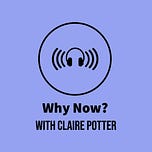



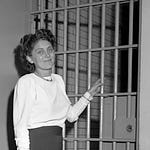
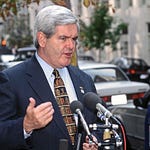
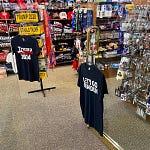
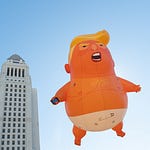
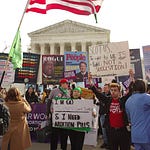
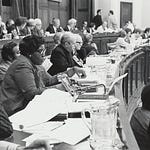

Share this post